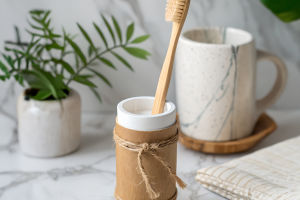Hey Lykkers, we've all been there—picking a plant that looks gorgeous in the store, but then it quickly starts to wilt or die at home. One of the most common mistakes we make is choosing the wrong plant for our living conditions.
Not all plants thrive in the same environment. Some need a lot of light, while others prefer the shade. Some need a lot of water, while others don't. Always consider your home's lighting, humidity, and temperature before selecting a plant. Do your research! Picking the right plant that matches your living space is the first step to success in plant care.
Overwatering your plants
We've all heard the saying, "You can't overwater a plant, right?" Well, actually, that's a myth! Overwatering is one of the most common mistakes we make with indoor plants. It's easy to get carried away, especially when we think our plants need more water to stay healthy. But too much water can lead to root rot and other issues. To avoid this, always check if the soil is dry before watering. A good rule of thumb is to water your plant when the top inch of soil feels dry. And make sure the pot has proper drainage so excess water can escape.
Ignoring plant feeding
Just like us, plants need proper nutrition to grow strong and healthy. However, many of us forget to feed our indoor plants. While some plants do fine without much fertilizer, others need a little extra boost to thrive. Use the right kind of plant food for each specific plant and follow the recommended guidelines. Over-fertilizing can harm the plant, so be mindful of the amount and frequency of feeding.
Placing plants in the wrong light
Another big mistake we make is placing plants in the wrong type of light. Some plants thrive in bright, direct sunlight, while others do best in low or indirect light. Knowing the specific light requirements of your plant is crucial. If a plant isn't getting enough light, it might stop growing or start losing leaves. On the flip side, too much direct sunlight can burn the plant. Take the time to figure out where your plants will do best in your home.
Not repotting when needed
Repotting is an essential part of plant care that many of us overlook. When a plant outgrows its pot, it becomes root-bound, which can stunt its growth and even harm it. Always keep an eye on your plant's growth. If it seems cramped or its roots are coming out of the drainage holes, it's time for a bigger pot. Repotting also gives you a chance to refresh the soil and provide your plant with new nutrients.
Neglecting pest control
Pests are a common problem for indoor plants, and ignoring them can quickly lead to bigger issues. Aphids, spider mites, and mealybugs are just a few of the critters that can infest your plants. To prevent pests, regularly inspect your plants, especially the undersides of the leaves. If you notice anything suspicious, treat your plants with natural pest control methods like neem oil or insecticidal soap. Early detection is key to preventing a full-blown infestation.
Not adjusting for seasons
Our plants need a little extra attention when the seasons change. During the colder months, the light in our homes can decrease, and the air tends to get drier, which can stress our plants. In the winter, it's important to adjust watering schedules and provide extra humidity. In the summer, we might need to adjust light levels to protect our plants from the stronger sun. Seasonal changes can affect the health of your plants, so make sure you're aware of how each season impacts your indoor garden.
Conclusion: Give your plants the love they deserve
In conclusion, taking care of indoor plants doesn't have to be complicated, but it does require attention and the right knowledge. Avoiding these common mistakes will help you create a healthier and more vibrant indoor garden. Remember, plants are living beings, and just like us, they need proper care, attention, and respect to thrive. So, let's be mindful of their needs and make sure they get the best care possible!
Lykkers, do you have any plant care tips or common mistakes you've learned the hard way? Share them with us! We'd love to hear your experiences.


